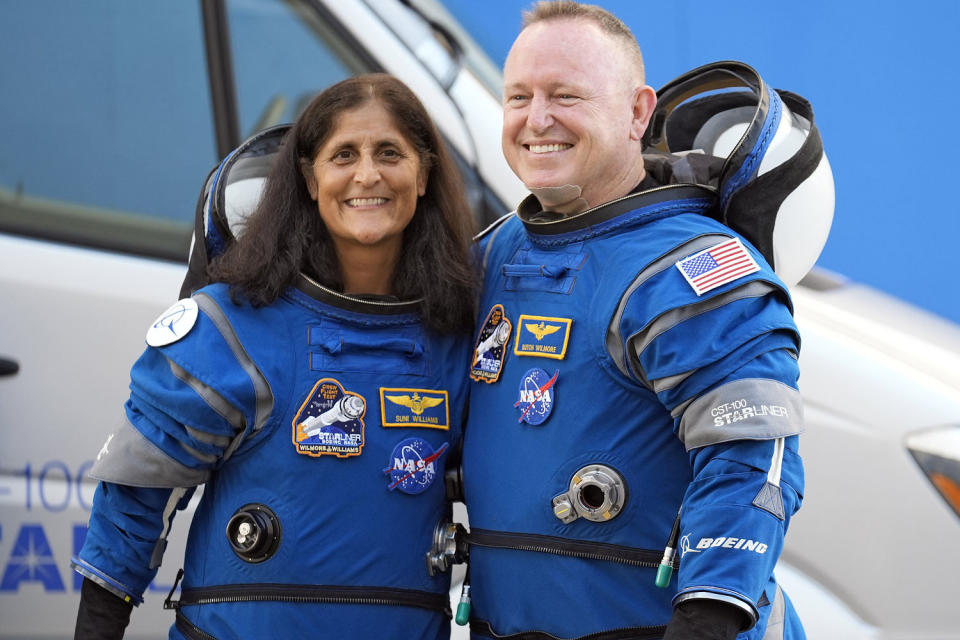[ad_1]
Two NASA astronauts spent nearly three months waiting aboard the International Space Station after their Boeing spacecraft encountered problems on its journey into orbit.
Boeing Starliner Capsulewhich is still parked at the space station, has been sidelined by Thrust motor failure and helium leakEngineers on Earth are struggling to understand the problems, and NASA is still studying how to get the astronauts home safely.
The high-stakes mission was the first crewed flight of the Starliner, and was supposed to be the final hurdle before NASA could certify Boeing’s spacecraft for routine trips to and from the orbiting outpost. But as the trip — originally scheduled to last about eight days — stretched out, NASA said it was considering flying the astronauts back to Earth aboard a SpaceX capsule instead.
Here's what happened to Boeing's Starliner capsule.
NASA and Boeing were monitoring two separate issues with the Starliner: one involving a set of thrusters and the other involving a helium leak in the propulsion system. Either problem could affect its ability to carry astronauts Butch Wilmore and Suni Williams to Earth.
Astronauts Launched aboard the Starliner spacecraft on June 5.The setbacks began the next day.
As Starliner approached the International Space Station, five of the capsule's 28 reaction control system thrusters failed, Delay the docking process for about an hour..
These thrusters are located on the spacecraft's service module and are used to move the capsule in orbit, especially to adjust its position during docking and separation with the space station.
Eventually, four thrusters were restored, allowing the astronauts to complete their arrival at the space station, but the problem prompted NASA to begin an investigation into why the thrusters failed.
Engineers at NASA and Boeing used a test engine at the space agency’s White Sands Test Facility in New Mexico to study the performance of the thrusters. The teams subjected that engine and its thrusters, which are being developed for future Starliner flights, to conditions similar to those the capsule will encounter on its way to the space station.
Mission managers also conducted a “hot fire test” in space, firing the Starliner's thrusters in short bursts while it remained docked with the space station.
Initial results indicated that all but one of the 28 reaction control thrusters worked well, but NASA said various tests showed that a small Teflon seal appeared to swell under high temperatures, potentially blocking fuel flow to the thrusters. It said the expanding seals may be responsible for the thruster problems that occurred during docking.
However, Steve Stich, NASA's commercial crew program manager, said this month that the team “cannot definitively prove that what we see in orbit is exactly what has been replicated on Earth.”
He said more time was needed to ensure ground tests accurately simulated conditions in orbit. NASA also wanted to analyze how the thruster problems would affect Starliner’s ability to safely separate and depart from the space station.


Separately, the teams also monitored slow helium leaks in the spacecraft's propulsion system.
Mission managers were aware of the helium leak before Starliner launched, but said at the time that the slow leak was manageable and unlikely to impact the mission or jeopardize the safety of astronauts.
But shortly after liftoff, officials discovered two more helium leaks on the top side of the capsule's service module.
Late last month, NASA said tests had shown that the Starliner's propulsion system was stable and that helium leak rates had not increased in a way that would jeopardize the return trip to Earth.
It brought in additional payment experts earlier this month to conduct further testing and analysis.
It’s possible that Wilmore and Williams could return home aboard Starliner, but if NASA chooses to rely on SpaceX for the return trip, they’ll have to extend their stay in orbit into the new year. To accommodate previously scheduled missions, they’ll stay at the space station until February, then return to Earth with two other space station crew members aboard one of SpaceX’s Crew Dragon capsules.
NASA is expected to make a final decision on the astronauts' return in the coming days.
This article was originally published on NBC News.com
[ad_2]
Source